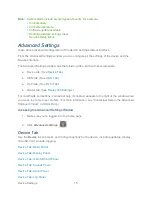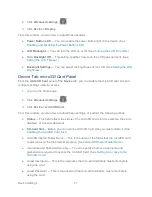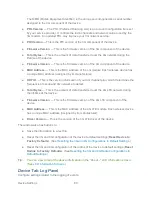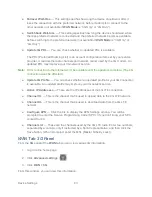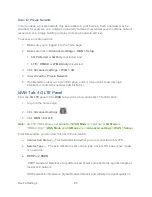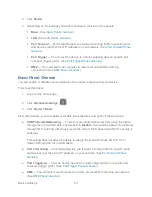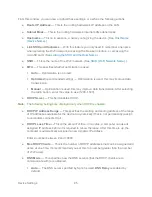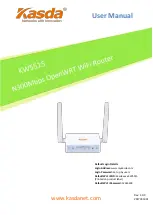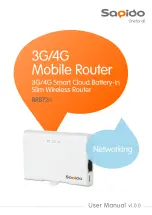
Device Settings
84
●
Connection Status
— This field reflects the status of the 3G connection: connected, not
connected, or dormant.
Dormant
means a connection is established, but no data is being transferred.
●
Service Type
— This is the network that is currently being used for your data
connection (1xRTT, EVDO, or EVDO Rev. A).
●
Coverage Type
— This is a list of the types of 3G networks that are available. The
RSSI
and
Ec/Io
for each type are shown.
RSSI reflects the signal strength of the network.
Ec/Io is a dimensionless ratio of the average power of a channel, typically the pilot
channel, to the total signal power.
●
MDN
(Mobile Directory Number) — This is a 10-digit phone number.
●
SID
(System ID) — The System ID identifies your home network area and is used in
conjunction with your phone number to determine if you are “home” or “roaming.”
●
MSID
(Mobile Station ID) — Also known as IMSI (International Mobile Station Identity),
the MSID is an identifier of a device on the 3G network.
●
NAI
(Network Access Identifier) — This is your User ID for accessing the 3G network.
●
DRC Cover
— Technical support staff may request this value from you.
●
PN 1xRTT
— Technical support staff may request this value from you.
●
DRC Value
— Technical support staff may request this value from you.
●
PN EVDO
— Technical support staff may request this value from you.
●
Channel
— Technical support staff may request this value from you.
●
Roaming Status
— This indicates whether you are home or roaming (outside of Sprint
coverage).
●
PRL Version
— The PRL (Preferred Roaming List) is an account configuration item set
by your service provider. It controls the radio channels and network carrier used by the
3G modem. An updated PRL may improve your 3G network service.
Tip:
You can view the 3G connection status on the “Network Status” LCD information screen.
(See
LCD Information Screens
.)
WAN Tab: 4G Panel
From the
4G
panel of the
WAN
tab you can view various 4G information.






